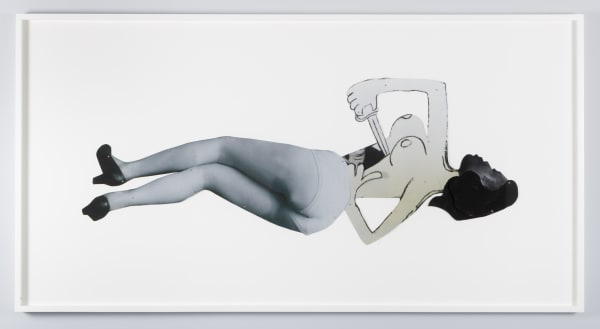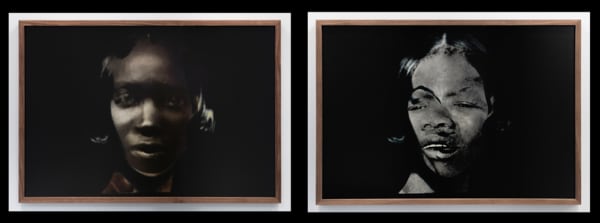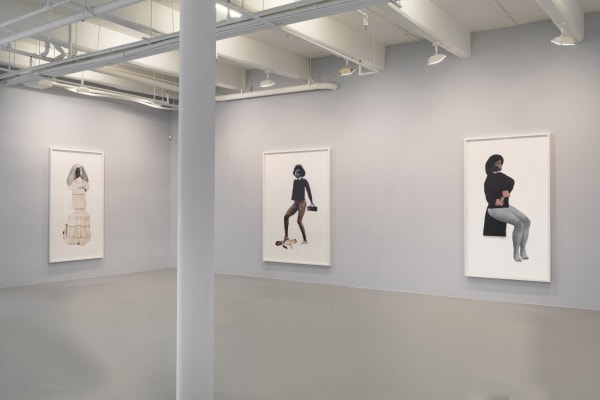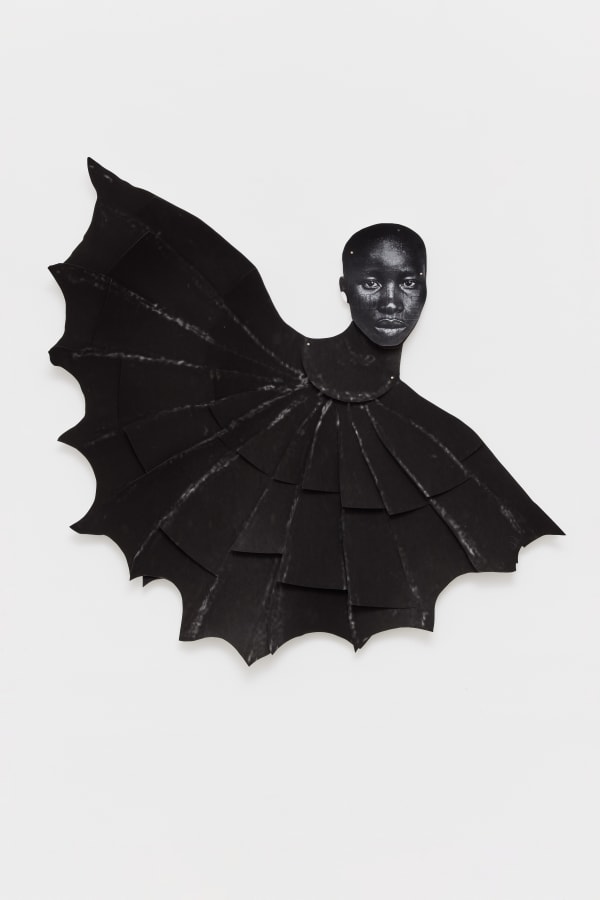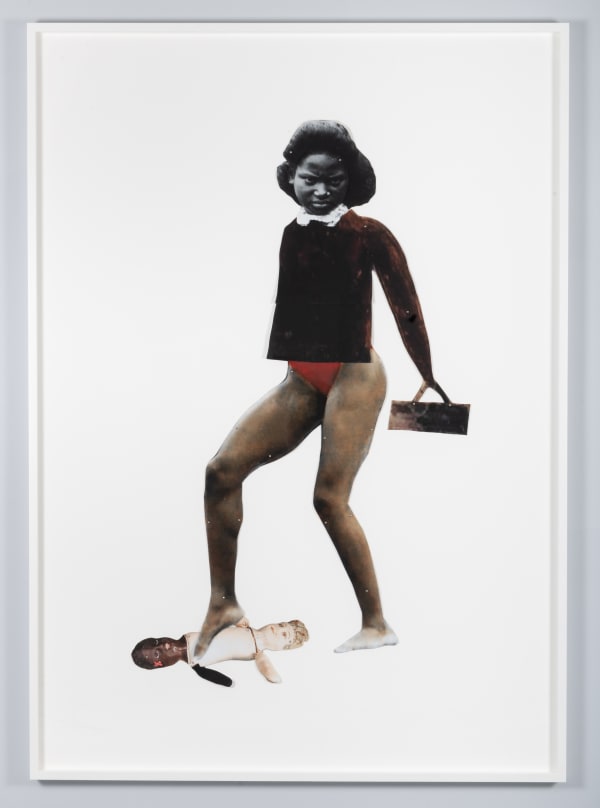Frida Orupabo: Closed Up Like A Fist
Winged, pinned, and disembodied, Orupabo’s most recent collaged images confront the history of generational, discriminatory trauma and simultaneously offer recuperative possibilities.
Nicola Vassell Gallery is pleased to present “Closed Up Like A Fist,” an exhibition of collages and digital prints by Frida Orupabo, on view March 17 - April 30, 2022.
Orupabo's multidisciplinary practice excavates colonial archives and digital sources to amass her materials of dispossessed imagery. By splicing and combining these depictions, she brings into question the mutability of identities, delicately bound by fragmented components. The temporal aspect of these photographs addresses how past depictions inform contemporary images, and how the two are intertwined.
-
 Frida Orupabo, Waiting, 2022
Frida Orupabo, Waiting, 2022 -
 Frida Orupabo, Marriage, 2022
Frida Orupabo, Marriage, 2022 -
 Frida Orupabo, The Angry One, 2022
Frida Orupabo, The Angry One, 2022 -
 Frida Orupabo, The Judge, 2022
Frida Orupabo, The Judge, 2022 -
 Frida Orupabo, September, 2022
Frida Orupabo, September, 2022 -
 Frida Orupabo, Woman Holding Apple, 2022
Frida Orupabo, Woman Holding Apple, 2022 -
 Frida Orupabo, Did It or Didn't It, 2022
Frida Orupabo, Did It or Didn't It, 2022 -
 Frida Orupabo, Somewhere in Between, 2022
Frida Orupabo, Somewhere in Between, 2022 -
 Frida Orupabo, Without Guilt, 2022
Frida Orupabo, Without Guilt, 2022 -
 Frida Orupabo, Women, 2022
Frida Orupabo, Women, 2022 -
 Frida Orupabo, Comfort, 2022
Frida Orupabo, Comfort, 2022 -
 Frida Orupabo, Bellyfull, 2022
Frida Orupabo, Bellyfull, 2022 -
 Frida Orupabo, Friend, 2022
Frida Orupabo, Friend, 2022 -
 Frida Orupabo, The Stone, 2022
Frida Orupabo, The Stone, 2022 -
 Frida Orupabo, Pleasing Arms, 2022
Frida Orupabo, Pleasing Arms, 2022 -
 Frida Orupabo, White Shoes, 2022
Frida Orupabo, White Shoes, 2022
Nicola Vassell Gallery is pleased to present Closed Up Like A Fist, an exhibition of collages and digital prints by Frida Orupabo, on view March 17 - April 30, 2022.
Winged, pinned, and disembodied, Orupabo’s most recent collaged images confront the history of generational, discriminatory trauma and simultaneously offer recuperative possibilities.
Orupabo’s multidisciplinary practice excavates colonial archives and other digital sources to amass her materials of dispossessed imagery. By splicing and combining these depictions, she brings into question the mutability of identities, delicately bound by fragmented components. The temporal aspect of these photographs addresses how past depictions inform contemporary images, and how the two are intertwined.
The exhibition’s title borrows from Gayle Jones’ “Corregidora,” a 1975 novel that explores the persistent psychological tyranny of generational trauma. The book deeply resonated with the artist as she developed this body of work. The ambivalent and contradictory qualities of Jones’ characters reverberate through Orupabo’s queries into the intricacies of human nature. Her fractured, splintered portraits embody sublime oppositions, coalescing beauty with horror, as a reminder of how closely the two coexist.
One of the key considerations in these works is the archival depictions of Black female bodies that is in conflict with their real lives and experiences. Rooted in historically racialized, colonialist images, Orupabo’s figurative interventions calls these discrepancies into question.
Of these many depictions, her visual narrative of female suicide is a crucial reference point. It recalls the plantation memories of Grada Kilomba as well as The Suicide of Lucretia by Albrecht Dürer and The Death of Cleopatra by Edmonia Lewis. The splayed, prone, slain constitution of tragic portraiture is poetically evinced in her boldly collaged counter-narratives. They challenge traumatic, repetitive imagery often connected to portrayals of women of color.
“After one is de-idealized, one becomes idealized, and behind this idealization lies the danger of a second alienation. In both processes one remains a response to a colonial order.” - Grada Kilomba





